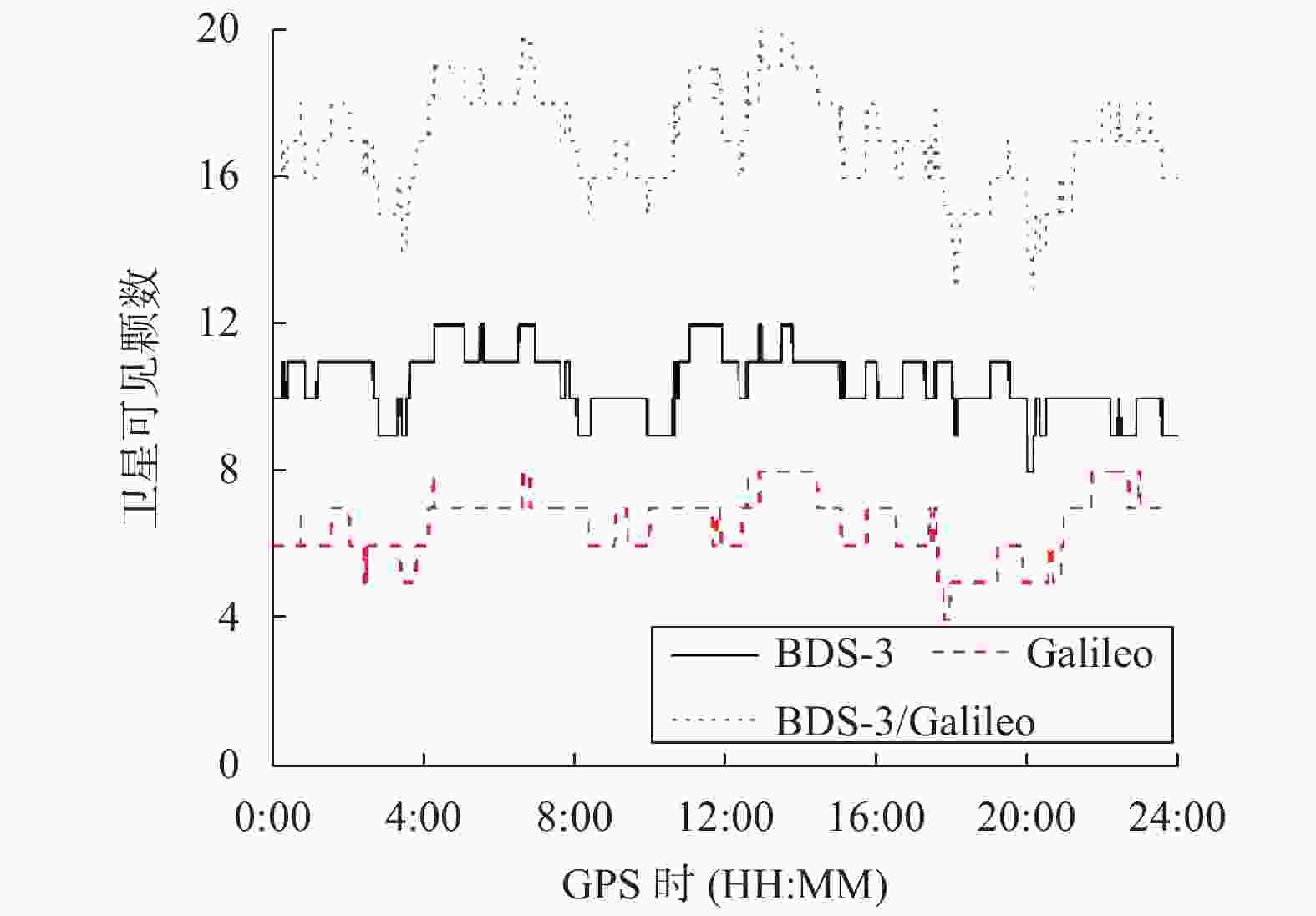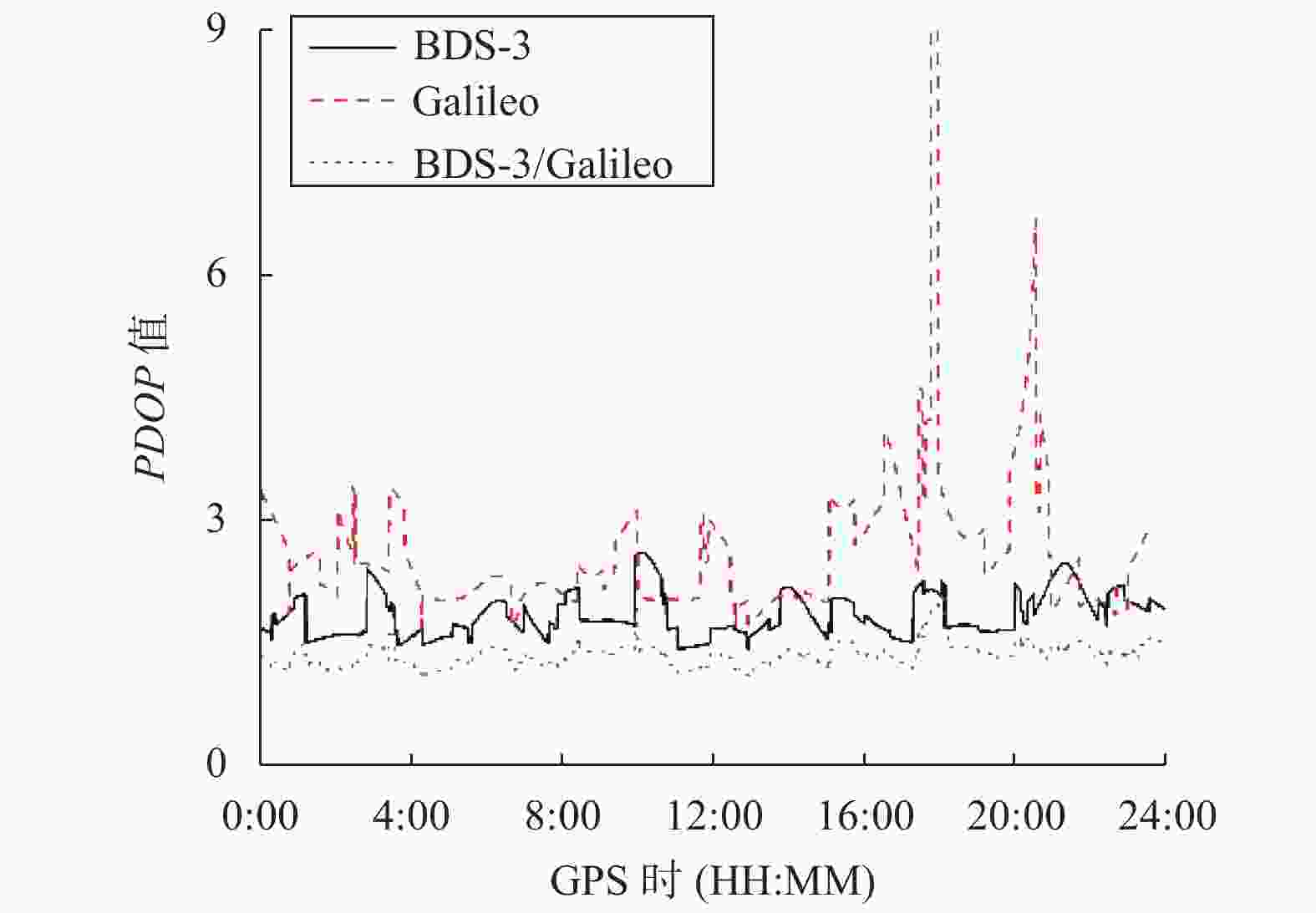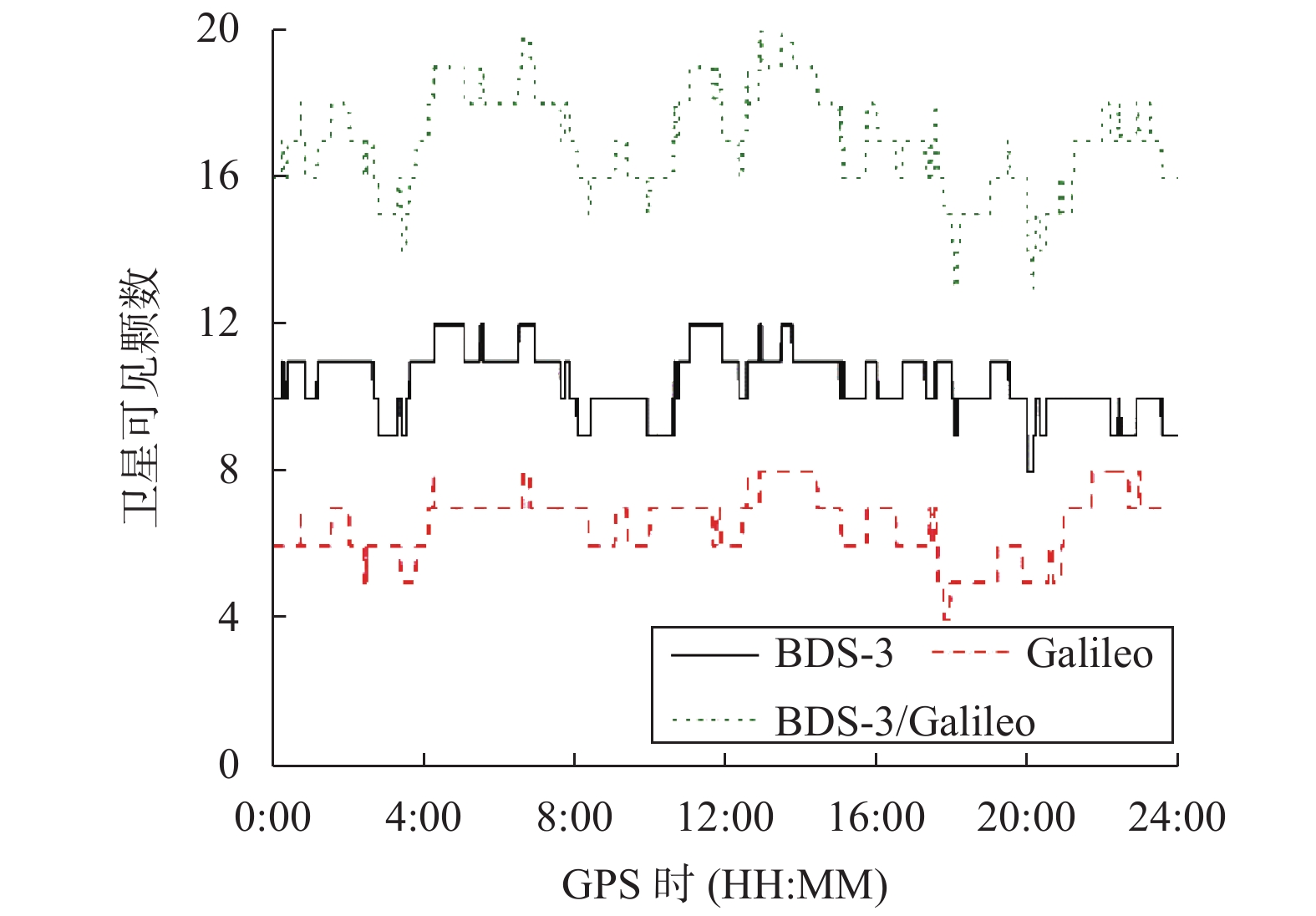Accuracy analysis of single-point positioning in pseudo-range combined with BDS-3 new frequency and Galileo single frequency
-
摘要: 为对比分析北斗三号(BDS-3)/Galileo相同频率伪距单点定位精度,基于MGEX(Multi-GNSS Experiment)分布的跟踪站实测数据,分析了BDS-3、Galileo以及BDS-3/Galileo单系统单频、双系统相同频率组合和非相同频率组合伪距单点定位精度. 经研究发现,BDS-3/Galileo相比单系统有效提升了卫星可见数与卫星空间分布几何结构,在单系统定位方面,BDS-3系统B1C和B2a伪距单点定位精度优于Galileo对应相同频率的伪距单点定位精度,在双系统定位方面,BDS-3/Galileo相同频率组合伪距单点定位精度优于非相同频率组合,双系统组合定位对Galileo单系统定位精度提升优于BDS-3,表明BDS-3相同频率的设计有效地提升了与Galileo系统的兼容性.
-
关键词:
- 北斗三号(BDS-3)/Galileo /
- 相同频率 /
- 单频组合 /
- 伪距定位
Abstract: In order to compare and analyze BDS-3/Galileo compatible frequency pseudorange single-point positioning accuracy, based on the measured data of MGEX distributed tracking stations, singal point positioning accuracy of pseudorange combination of dual-system compatible frequencies and non-compatible frequenry of BDS-3 and Galileo are analyzed, together with that of single frequency of BDS-3 and Galileo respectively. It is found through research that BDS-3/Galileo combination effectively improves the visible number of satellites and the geometric structure of satellite spatial distribution compared to a single system. In terms of single system positioning, the single point positioning accuracy of B1C and B2a pseudorange of BDS-3 is better than that of comesponding compatible frequenry of Galileo. In terms of dual-system positioning, the single point positioning accuracy of compatible frequenry pseudorange combination of BDS-3/Galileo is better than that of non-compatible frequenry combination. and the dual-system combination positioning improves the Galileo single-system positioning accuracy better BDS-3, which indicates that the design of BDS-3 compatible frequency effectively improves the compatibility with Galileo system. -
表 1 单系统伪距单点定位精度(RMS值)统计
系统 频率 RMS/m E N U BDS-3 B1C 0.41 0.33 2.93 B2a 0.65 0.45 5.31 Galileo E1 0.58 0.45 2.99 E5a 0.86 0.63 5.36 表 2 双系统组合伪距单点定位精度(RMS值)统计
系统 频率 RMS/m E N U BDS-3/Galileo B1C/E1 0.37 0.26 2.14 B2a/E5a 0.60 0.35 4.22 B1C/E5a 0.40 0.32 2.91 B2a/E1 0.64 0.38 4.62 表 3 双系统频率组合对单系统单频定位精度定量提升统计
频率类型 频率 对B1C提升/% 对B2a提升/% 对E1提升/% 对E5a提升/% E N U E N U E N U E N U 兼容 B1C/E1 9.7 21.2 27.0 36.2 42.2 28.7 B2a/E5a 7.7 22.2 20.5 30.2 44.4 21.3 非兼容 B1C/E5a 2.4 3.0 0.6 B2a/E1 1.5 15.6 12.9 −10.0 15.6 −54.0 53.5 48.2 45.8 -
[1] 金俭俭, 高成发, 张瑞成, 等. GPS与BDS2、BDS3融合数据短基线解算精度分析[J]. 测绘通报, 2020(3): 83-86, 95. [2] 方欣颀, 范磊. BDS-2/BDS-3伪距单点定位精度分析[J]. 全球定位系统, 2020, 45(1): 19-25. [3] 谢明德. BDS-3三频精密单点定位精度分析[J]. 全球定位系统, 2020, 45(1): 71-76. [4] 戴金倩, 吴迪, 戴小蕾, 等. BDS-3实时精密单点定位精度分析[J]. 测绘通报, 2020(1): 30-34. [5] 王利华, 周定杰, 刘鸿飞, 等. GPS、GLONASS、BDS、Galileo动态精密单点定位精度及收敛时间分析[J]. 测绘地理信息, 2020(4): 64-69. [6] 尹志豪, 王广兴, 胡志刚, 等. 北斗三号观测数据质量分析[J]. 测绘科学, 2020, 45(6): 37-45. [7] 曹相, 王庆, 高成发, 等. 基于BDS-3、GPS和Galileo重叠频率观测值的紧组合RTK定位方法[J]. 仪器仪表学报, 2019, 40(10): 138-144. [8] 刘凡, 李雷, 刘国林, 等. BDS-2与BDS-3卫星空间信号精度评估[J]. 测绘科学, 2020, 45(1): 54-61, 76. [9] 张乾坤, 刘小生, 何琦敏. BDS-3多频点伪距单点定位性能研究[J]. 测绘通报, 2020(1): 71-75. [10] 吴明魁, 刘万科, 张小红, 等. GPS/Galileo/BDS-3试验星短基线紧组合相对定位性能初步评估[J]. 武汉大学学报(信息科学版), 2020, 45(1): 13-20. [11] 谭理庆, 黄亮, 杜仲进, 等. BDS/Galileo系统观测数据质量分析[J]. 全球定位系统, 2019, 44(6): 27-34. [12] 李湘梅, 陆兆峰, 左小清, 等. BDS/GLONASS/GALILEO多模组合单点定位性能比较分析[J]. 城市勘测, 2019(2): 101-106. [13] 布金伟, 左小清, 金立新, 等. BDS/GPS/Galileo多模组合单点定位稳定性分析[J/OL].(2019-03-06)[2020-04-20]. 地球物理学进展. https://oversea.cnki.net/Kcms/detail/detail.aspx?filename=DQWJ2019030201J&dbcode=CJFQ&dbname=CAPJ2019. [14] 刘琳, 席瑞杰. GPS/GLONASS/BDS/Galileo系统载波相位观测值质量对比分析[J]. 全球定位系统, 2019, 44(1): 16-22. [15] 布金伟, 左小清, 李海强, 等. BDS/Galileo组合伪距单点定位性能测试与分析[J]. 地球物理学进展, 2019(5): 1707-1713. DOI: 10.6038/pg2019BB0588 -





 下载:
下载:





